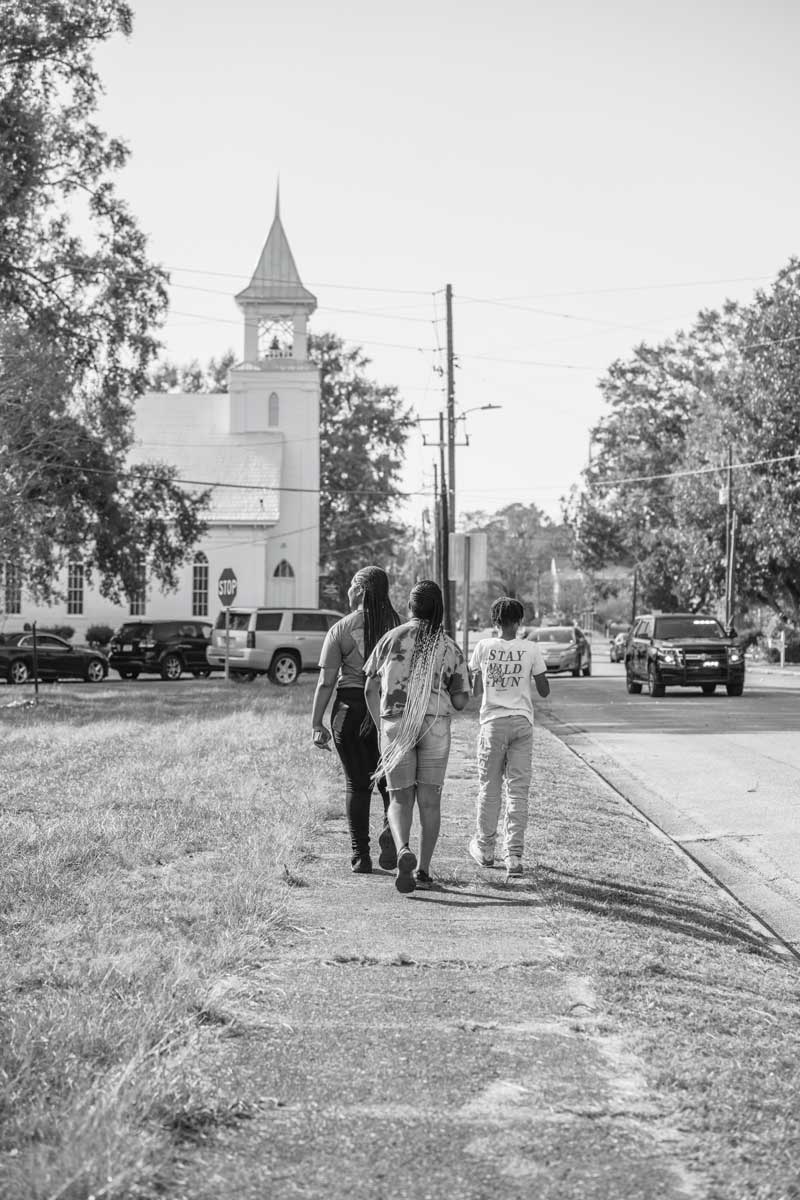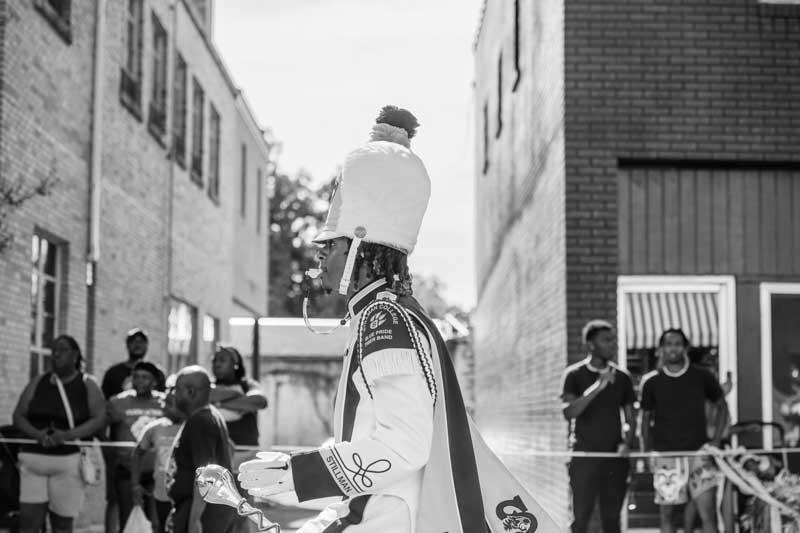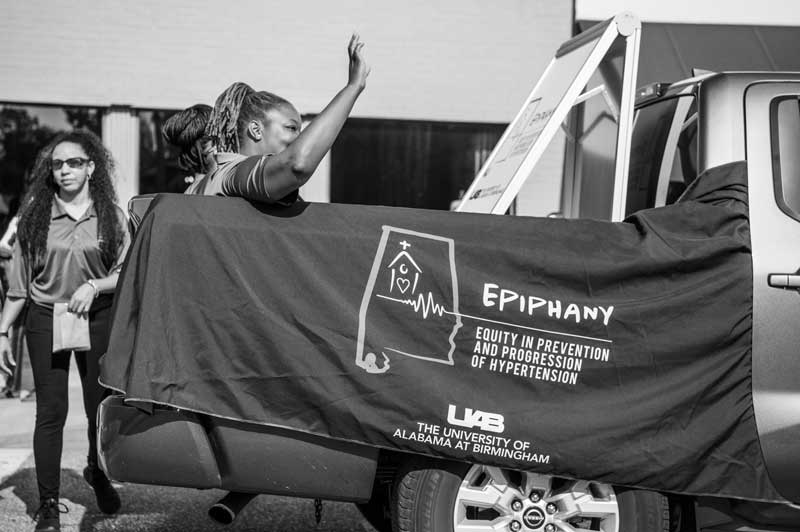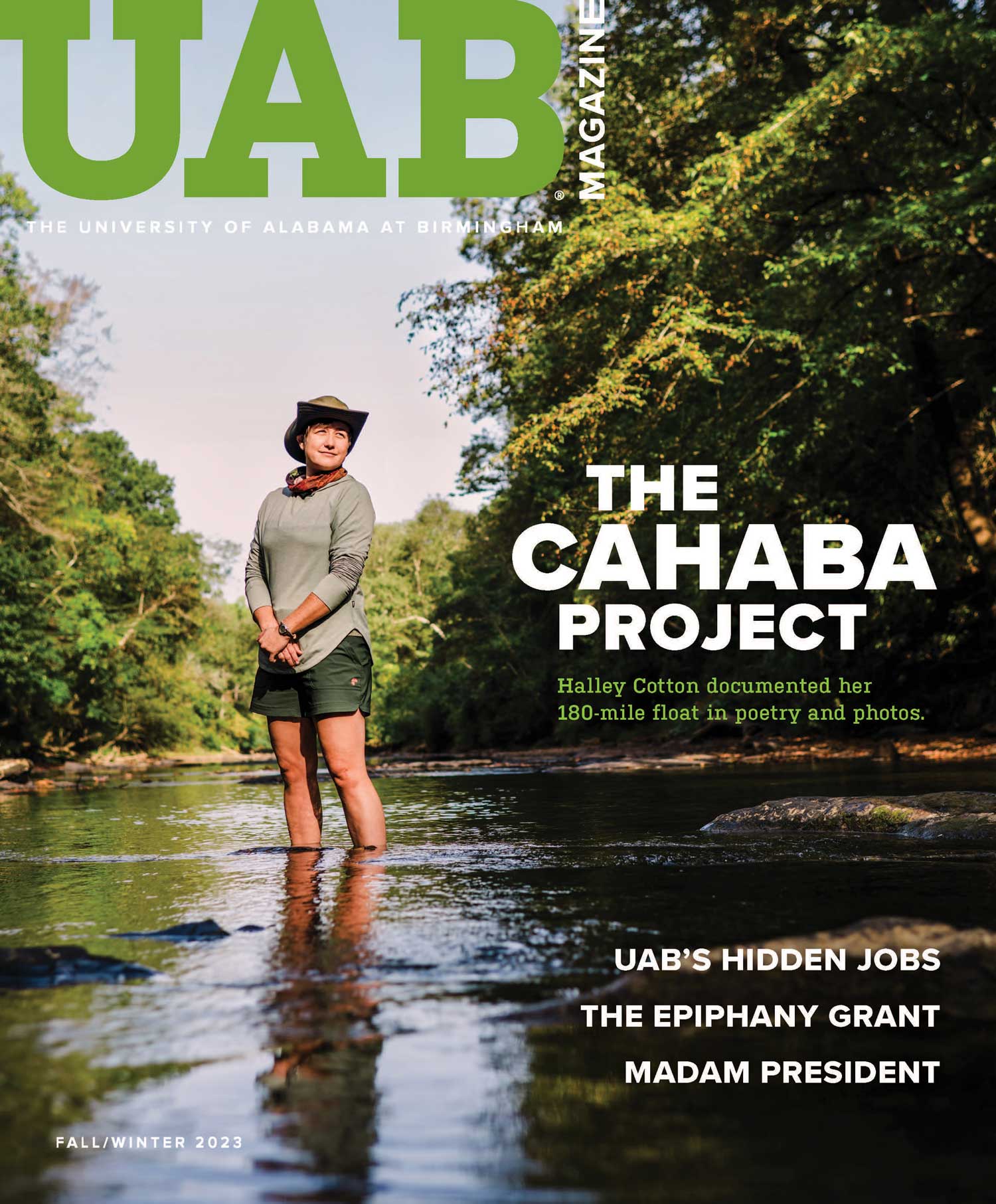The two-story, red-brick Butler Chapel African Methodist Episcopal Zion Church, standing barely a mile from the campus of Tuskegee University, looms large in the history of Macon County.
A state historic marker outside the church explains that several thousand people—far too many for the sanctuary—gathered here in June 1957 for the first meeting of the Tuskegee Civic Association’s (TCA) “Crusade for Citizenship.” In an effort to prevent Black registered voters from actually voting in local elections, the state had redrawn the town’s political boundaries. At that meeting, the Rev. Kenneth L. Buford, minister of Butler Chapel and vice president of the TCA, urged listeners to boycott white businesses and to challenge the boundary legislation in court. After a boycott lasting three-and-a-half years and a landmark Supreme Court decision in 1960, Tuskegee’s original voting boundaries were restored. The TCA’s model of ongoing mass resistance, historians say, was an inspiration for the passage of the Civil Rights Act of 1964 and the Voting Rights Act of 1965.
Along with ministers and local business leaders, university faculty from Tuskegee’s famed Tuskegee Institute (now Tuskegee University) played a major role in changing Macon County. The president of the TCA was Charles Gomillion, a sociology professor and dean of students at Tuskegee Institute. (Gomillion eventually earned his Ph.D. in sociology from Ohio State University in 1959.)
Today, Butler Chapel AME Zion Church is a gathering place in another fight against a threat to the Black community of Tuskegee: an unseen killer known as hypertension, or high blood pressure. And just as in the late 1950s, the effort is a partnership between churches and universities—including Tuskegee and UAB.

A Generational Health Issue
Black people in the United States have some of the highest rates of high blood pressure in the world. Although high blood pressure is a problem for many Americans, Black adults are particularly hard hit. About 55 percent of Black adults have high blood pressure, they are more likely to have severe high blood pressure, and they develop high blood pressure earlier in life compared with other groups. High blood pressure leads to heart attacks, strokes, heart failure, kidney disease, and vision problems.
This is an issue that crosses generations. “Most people think of hypertension as a cardiovascular disease risk factor that only impacts adults,” says Shakia Hardy, Ph.D., assistant professor in the UAB School of Public Health’s Department of Epidemiology. “But 20 percent of Black adolescents have elevated blood pressure.”
After college, and before she decided to go to graduate school, Hardy returned to her hometown in rural North Carolina to work for the local Head Start program.
“There were so many preschoolers with obesity and young parents with hypertension,” Hardy says. As a health and nutrition specialist, she directed meal and activity plans for seven Head Start centers and advised families “who experienced generational transmission of cardiovascular disease risk factors,” she says.
Making an Impact
Hardy enjoyed the work, but “I felt the impact of our program was limited by the lack of evidence-based strategies and resources to address the social determinants of health that influenced health behaviors,” she says. Having grown up in a small town, “I know first-hand how lack of access to health care, fresh foods, and physical activity spaces in rural communities can impact health,” Hardy says.
This is a problem that is not limited to the rural South. In 2022, the American Heart Association launched a major effort to address the impact of social determinants of health on cardiovascular health. The program is known as RESTORE. It has funded programs at UAB and four other institutions nationwide to explore new approaches to the issue.
Each of the RESTORE projects looks “upstream” of the hypertension to the underlying causes and aims to test new ways to prevent people from progressing to hypertension in the first place.
“This focus on hypertension prevention in RESTORE is pretty unusual,” says Andrea Cherrington, M.D., professor in the UAB Marnix E. Heersink School of Medicine’s Division of Preventive Medicine and principal investigator at UAB for RESTORE. Hardy is co-principal investigator at UAB.
“We are usually focused on trying to improve hypertension control,” Cherrington says. “In this case, we are saying: ‘We know that rates of cardiovascular disease are high and disproportionately higher in African American communities. Why can’t we start further up the line and prevent hypertension in the first place?”
For all RESTORE projects, “the focus is on taking evidence-based strategies and translating them in a way that takes into account adverse social determinants of health,” Cherrington says. Social determinants of health, according to the World Health Organization definition, “are the conditions in which people are born, grow, work, live, and age, and the wider set of forces and systems shaping the conditions of daily life.” For example, Cherrington says, “if you eat healthy, you can prevent hypertension. But in some communities that is easier said than done, especially in rural areas.”
EPIPHANY in the Black Belt
The UAB project is called EPIPHANY, which stands for Equity in Prevention and Progression of Hypertension by Addressing barriers to Nutrition and Physical Activity. Cherrington and Hardy are working with 20 churches in the Black Belt of rural Alabama. The churches will help recruit participants to test ways to prevent hypertension, but they also will receive “micro grants” of $1,000 in order to develop and implement their own health-focused projects.
Participants at half of the churches will receive group health education and personal computer tablets to access online cooking shows and exercise classes. People in the other half of the study will receive group health education, access to online cooking shows and exercise classes, plus peer support from a trained community health worker to help set and meet diet and physical activity goals. When the study ends, the participants who did not receive peer support and church-wide grants initially will receive them. “When you go into a resource-limited region, doing nothing for one group is unethical,” Cherrington says.
EPIPHANY, like all RESTORE projects, is what is known as a multi-level intervention. “We have community health workers providing peer coaching for the participants in the EPIPHANY study, and then we have a community-level intervention that trains church champions to initiate programs that focus on some aspect of lifestyle modification,” Cherrington says. “That could be a focus on healthy eating, starting a farmer’s market, a walking group, or something else. But it is based on what the particular community thinks they need and wants to support.”
The UAB and Tuskegee researchers are partnering with two community-based groups to carry out the EPIPHANY study. Connection Health is a community health worker-focused organization established in 2014, the first such nonprofit in Alabama. Connection Health will provide the peer coach training and peer coach intervention at the individual level of the study. The Rural Alabama Prevention Center, located in the Black Belt, was already implementing a similar church-based program in the area. “We said, ‘How can we partner with you to augment that program and continue the dissemination?’” Cherrington says. “Identifying and working with community partners is crucial—they are trusted members of the community and many times are already doing the work.”
Cherrington also is the principal investigator for a large, NIH-funded center, known as ForgeAHEAD, focused on cardiometabolic diseases that are particularly problematic in the rural South. ForgeAHEAD and EPIPHANY both operate on the strengths-based model. “It acknowledges that there are resources and strengths in every community,” Cherrington says. “The interventions we carry out in partnership with the community play on those strengths and recognize the expertise within community organizations. If you want to know what is in the community and what is not in the community, you have to ask.”

Parades and Hypertension
On a recent Friday night, the EPIPHANY team was in Camden, Alabama, about an hour and a half southwest of Montgomery, for a parade. As the Wilcox County High School band marched through the streets before their big game against the Central High (Hayneville) Lions, EPIPHANY staff marched as well, handing out fliers on blood pressure control and prevention to the crowd. Later, during the game itself, they offered free blood pressure checks.
Their work emphasizes the challenges of preventing hypertension. “So far, we have screened over 1,800 participants, and enrolled 167,” says Lanisha Hall, program coordinator at UAB for the EPIPHANY project. Mainly, that is because the people screened already have high blood pressure. “Some people are surprised, but most people are just unaware of their blood pressure numbers,” Hall says. “Though our target population is those people who do not have high blood pressure, this supports our goal to reduce health disparities in the African American community.”
The difficulty in finding participants is not dispiriting, Hall emphasizes. “It’s an honor to be a part of this program in the Black Belt, to share health information and resources in the community,” she says. “My passion is working with the community and being able to educate individuals who are unaware of what blood pressure is, what their numbers are, and how just a few simple lifestyle modifications may make a significant difference.”
Providing a Voice
Projects begin with asset-mapping exercises at the individual and community levels. “We want to understand, what is already there?” Cherrington says. “It is not always creating something new—sometimes we just need to connect people. Our role as a university is advocating and providing a voice or a platform to advocate for things that are needed. These might be resources or grants.”
EPIPHANY and ForgeAHEAD, Cherrington notes, are not just helping communities through research, but by attracting more resources. “We do a lot of work to try and employ individuals within rural communities outside of Birmingham to help build capacity for the work that they are doing and to partner with community organizations,” Cherrington says. “They are already doing the work. The Rural Alabama Prevention Center is already there doing the work. We can create additional opportunities through partenrship.” And by measuring outcomes, “we can also help them advocate for additional dollars,” Cherrington adds. “That’s how it should work. We are helping bring the resources to the community. A necessary component of our success is engaging people with intimate knowledge of their communities and then by also providing meaningful contracts to community organizations we are providing workforce development through our support of these organizations.”

Building that Pipeline
EPIPHANY also is intentionally built to support young investigators. “A lot of my staff are in graduate programs, which is fun,” Cherrington says. “They can use what we are doing as part of their own studies. To me, it is all part of building the pipeline.”
EPIPHANY has already led to a separate grant to Hardy from the National Institutes of Health. The award will fund an ancillary study to EPIPHANY that will focus on Black adolescents.
Hardy’s research for her doctorate, including papers in prestigious journals, established that “adolescence is a critical period in development for prevention interventions,” Hardy says. In a paper published in JAMA Cardiology in 2017, Hardy and her co-authors “highlighted that Black boys transition from normal blood pressure to adverse levels earlier in life than other demographic groups,” she explains. And four years later, in JAMA Network Open, they “showed that racial/ethnic disparities in blood pressure do not exist in early childhood but emerge during adolescence,” Hardy says.
“I am deeply passionate about prevention of cardiovascular disease and race disparities,” Hardy says. “EPIPHANY pairs those passions together by aiming to prevent hypertension among a Black, rural population.” What most interests her about the project, Hardy says, is “learning how we can engage young, Black populations in prevention programs and overcome barriers to healthy behaviors in rural communities.”
As with the main EPIPHANY study, details of the intervention will be based on stakeholder feedback, Hardy says. “We plan to have adolescent peer supporters contact participants at least twice a month to provide education on what high blood pressure is and its consequences, healthy eating, physical activity, stress management, and home blood pressure monitoring techniques,” Hardy says.
The work is especially meaningful to her, Hardy says. “I am a country girl at heart. I am dedicated to doing scientific work that aims to benefit rural communities.”



